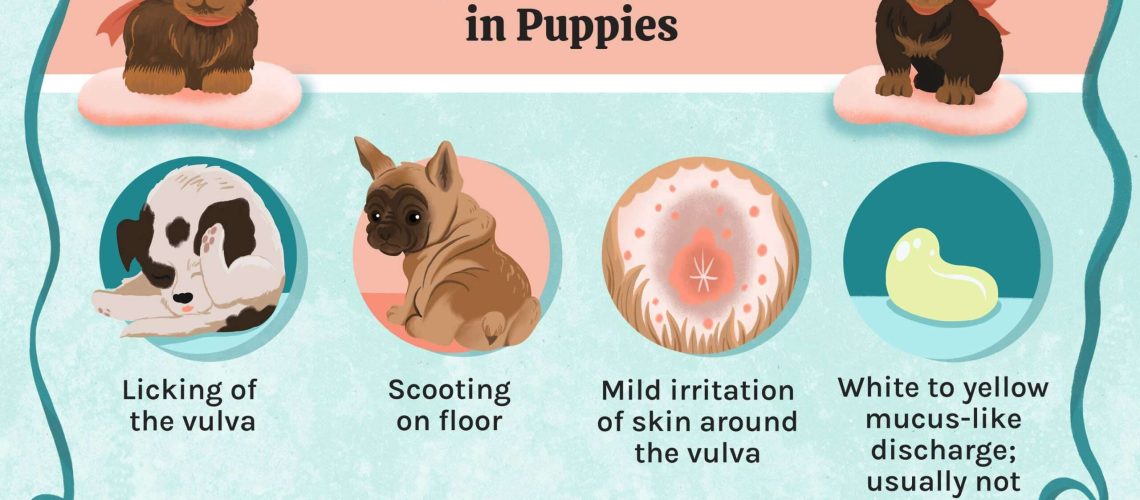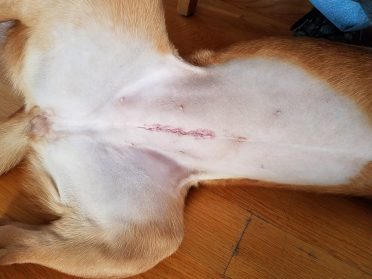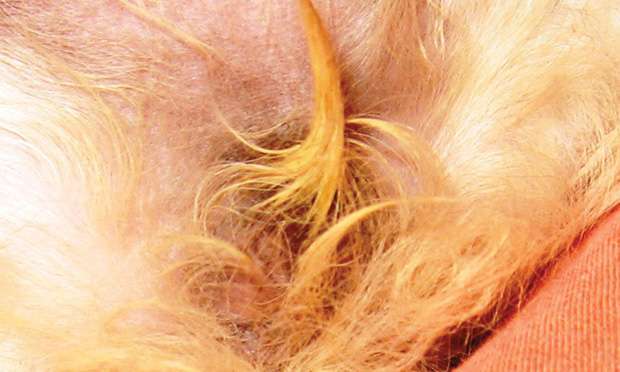Key Takeaways:
- Vaginitis in dogs is a common condition characterized by inflammation of the vaginal area.
- It can be caused by various factors, including bacterial or yeast infections, hormonal imbalances, and foreign bodies.
- Common symptoms of vaginitis in dogs include increased vaginal discharge, redness or swelling of the vulva, and frequent urination.
- Treatment for vaginitis may involve topical medications, antibiotics, hormone therapy, or removal of foreign objects.
- Preventing vaginitis in dogs involves good hygiene practices, regular cleaning of the genital area, and avoiding exposure to potential irritants or allergens.
Are you a dog owner who wants to ensure the health and well-being of your furry friend? If so, then delving into the topic of vaginitis in dogs is essential for you. Understanding this common condition can help you provide the best care for your beloved pet. Did you know that up to 40% of female dogs will experience vaginitis at some point in their lives? By exploring this subject, you'll gain valuable insights into the causes, symptoms, and treatment options for this condition. So, let's dive in and uncover everything you need to know about vaginitis in dogs!
Understanding Vaginitis in Dogs: Causes and Symptoms
What is Vaginitis?
Vaginitis is a common condition that affects female dogs. It occurs when the vagina becomes inflamed or irritated. This inflammation can be caused by various factors such as bacterial or yeast infections, hormonal imbalances, or even foreign objects in the vagina. When a dog has vaginitis, she may experience discomfort, itchiness, and an abnormal discharge from her genital area.
Causes of Vaginitis in Dogs
There are several possible causes of vaginitis in dogs. One common cause is a bacterial infection. Bacteria naturally live in the vagina, but if an overgrowth occurs, it can lead to inflammation and irritation. Another cause is a yeast infection, which happens when there is an overgrowth of yeast in the vagina. Hormonal imbalances can also contribute to vaginitis, especially during certain stages of a dog's reproductive cycle.
Symptoms of Vaginitis in Dogs
When a dog has vaginitis, there are some noticeable symptoms to look out for. These include:
- Swelling and redness around the vulva
- Increased licking or scratching of the genital area
- A foul-smelling discharge from the vagina
- Frequent urination or difficulty urinating
- Discomfort or pain during urination
It's important to note that these symptoms may vary depending on the severity of the condition and the individual dog. If you notice any of these signs in your female dog, it's best to consult with a veterinarian for proper diagnosis and treatment.
Spotting Vaginitis in Dogs: How to Recognize the Signs
Physical Signs of Vaginitis
Spotting vaginitis in dogs can be done by observing physical signs. One of the most common signs is swelling and redness around the vulva. This area may appear larger than usual and feel warm to the touch. Additionally, you may notice an abnormal discharge from the vagina. The discharge can vary in color and consistency, but it is often thick and has a strong odor.
Behavioral Signs of Vaginitis
In addition to physical signs, there are also behavioral signs that can indicate vaginitis in dogs. If your dog is constantly licking or scratching her genital area, it could be a sign of discomfort or irritation caused by vaginitis. Some dogs may also exhibit signs of pain or discomfort during urination, such as whimpering or straining to urinate.
When to Seek Veterinary Help
If you suspect that your dog has vaginitis based on the signs mentioned above, it's important to seek veterinary help for proper diagnosis and treatment. A veterinarian will be able to examine your dog and perform any necessary tests to determine the cause of the vaginitis. They may collect a sample of the vaginal discharge for analysis or conduct a urine test to rule out other possible conditions.
It's essential not to ignore these signs as untreated vaginitis can lead to more severe complications. With prompt veterinary care, your furry friend can receive appropriate treatment and get back to feeling comfortable and healthy again.
Treating Vaginitis in Dogs: Home Remedies or Veterinary Help?
When to Seek Veterinary Help
If your female dog is showing symptoms of vaginitis, such as excessive licking of the genital area, discharge, or discomfort, it is important to consult a veterinarian. A veterinarian will be able to accurately diagnose the condition and provide appropriate treatment. They may perform a physical examination, collect a sample for laboratory analysis, or recommend imaging tests to rule out any underlying causes.
Home Remedies for Vaginitis
While it is always best to consult with a veterinarian for proper diagnosis and treatment, there are some home remedies that may help alleviate mild cases of vaginitis in dogs. One option is to gently clean the vulva area with warm water and mild soap. This can help remove any irritants or bacteria that may be causing the inflammation. Additionally, keeping your dog's genital area clean and dry can promote healing. However, it is crucial not to use any harsh chemicals or irritants on your dog's sensitive skin.
Caution:
It is important to note that home remedies should only be used as a temporary solution until you can seek veterinary advice. If your dog's symptoms worsen or persist despite home care, it is essential to consult with a veterinarian promptly.
Are Some Dog Breeds More Prone to Vaginitis?
Some dog breeds may be more prone to developing vaginitis due to their anatomy or genetic predisposition. Breeds with excess skin folds around the vulva area, such as Bulldogs or Basset Hounds, are more susceptible to trapping moisture and bacteria, leading to an increased risk of vaginitis. Additionally, certain breeds with shorter urethras may have difficulty fully emptying their bladders, which can contribute to the development of urinary tract infections and subsequent vaginitis.
Common Breeds Prone to Vaginitis
- Bulldogs
- Basset Hounds
- Dachshunds
- Boxers
- English Setters
It is important to note that while these breeds may be more prone to vaginitis, any female dog can develop the condition. Proper hygiene and regular veterinary care are essential for all dogs, regardless of breed.
Preventing Vaginitis in Female Dogs: Tips for a Healthy Pup
Maintaining Good Hygiene
To prevent vaginitis in female dogs, it is crucial to maintain good hygiene practices. Regularly cleaning your dog's genital area with warm water and mild soap can help remove any potential irritants or bacteria. It is important to dry the area thoroughly after cleaning to prevent moisture buildup, which can contribute to the development of vaginitis.
Avoiding Irritants
Certain products or substances can irritate your dog's genital area and increase the risk of vaginitis. Avoid using harsh chemicals, perfumes, or scented wipes near your dog's vulva. Additionally, be cautious when using topical flea or tick treatments as they may cause irritation in some dogs. Always follow the instructions provided by your veterinarian or product manufacturer.
Note:
If you notice any signs of vaginal discharge, discomfort, or changes in urination patterns, it is essential to consult with a veterinarian promptly. Early detection and treatment can help prevent complications and ensure your pup stays healthy.
Vaginitis in Dogs: Is it Contagious to Other Dogs or Humans?
Vaginitis in dogs is not contagious to other dogs or humans. It is primarily caused by an overgrowth of bacteria within the vagina rather than a contagious pathogen. However, it is important to note that some underlying causes of vaginitis, such as urinary tract infections or sexually transmitted infections, may be contagious and can affect other dogs or humans.
Transmission of Underlying Causes
If the vaginitis in your dog is caused by an underlying infection, such as a urinary tract infection or a sexually transmitted infection, it is possible for these pathogens to be transmitted to other dogs through direct contact or shared objects like bedding or toys. In some cases, these infections can also be transmitted to humans through close contact with infected dogs.
Preventing Transmission
To prevent the transmission of underlying causes of vaginitis, it is important to practice good hygiene and take appropriate precautions. Regularly clean and disinfect your dog's bedding and toys. Avoid allowing your dog to interact closely with other dogs who may have known infections. If you suspect an underlying infection, consult with a veterinarian for proper diagnosis and treatment.
Remember, while vaginitis itself is not contagious, it is crucial to address any underlying causes promptly to prevent the spread of potential infections.
In conclusion, vaginitis is a common infection in female dogs that can cause discomfort and discharge. It is important to seek veterinary care if your dog shows signs of vaginitis to ensure proper treatment and prevent any complications.

















